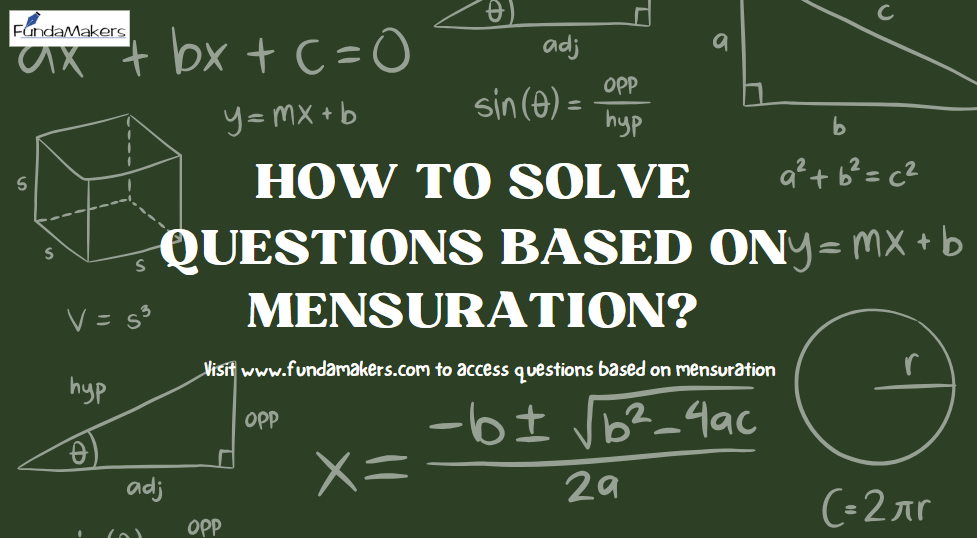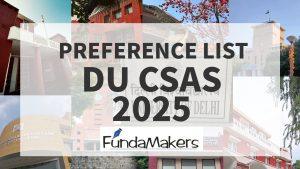Mensuration in mathematics is a branch that deals with the measurement of geometric figures and their parameters, such as length, area, and volume. It encompasses the methods and formulas used to calculate these dimensions for various shapes and solids. This field is fundamental in both theoretical mathematics and practical applications, enabling us to quantify the physical space that objects occupy and the extent of their surfaces. From calculating the area of a rectangle to determining the volume of a cylinder, mensuration provides essential tools for a wide range of disciplines, including engineering, architecture, and everyday problem-solving.
Important Formulas in Mensuration
Mensuration involves various formulas for calculating the dimensions of different geometric shapes. Here are some important formulas categorized by shape type:
2D Shapes
- Square
- Area: 𝐴=𝑎2
- Perimeter: 𝑃=4𝑎
- (where 𝑎 is the length of a side)
- Rectangle
- Area: 𝐴=𝑙×𝑤A=l×w
- Perimeter: 𝑃=2(𝑙+𝑤)P=2(l+w)
- (where 𝑙l is the length and 𝑤w is the width)
- Triangle
- Area: 𝐴=12×𝑏×ℎ
- Perimeter: 𝑃=𝑎+𝑏+𝑐
- (where 𝑏 is the base, ℎ is the height, and 𝑎,𝑏,𝑐 are the lengths of the sides)
- Circle
- Area: 𝐴=𝜋𝑟2
- Circumference: 𝐶=2𝜋𝑟
- (where 𝑟r is the radius)
- Parallelogram
- Area: 𝐴=𝑏×ℎA=b×h
- Perimeter: 𝑃=2(𝑎+𝑏)
- (where 𝑏 is the base and ℎ is the height, 𝑎a and 𝑏b are the lengths of the sides)
- Trapezium (Trapezoid)
- Area: 𝐴=12×(𝑎+𝑏)×ℎ
- (where 𝑎a and 𝑏 are the lengths of the parallel sides and ℎ is the height)
3D Shapes
- Cube
- Volume: 𝑉=𝑎3
- Surface Area: 𝑆𝐴=6𝑎2
- (where 𝑎a is the length of an edge)
- Cuboid (Rectangular Prism)
- Volume: 𝑉=𝑙×𝑤×ℎ
- Surface Area: 𝑆𝐴=2(𝑙𝑤+𝑙ℎ+𝑤ℎ)
- (where 𝑙 is the length, 𝑤 is the width, and ℎ is the height)
- Cylinder
- Volume: 𝑉=𝜋𝑟2h
- Surface Area: 𝑆𝐴=2𝜋𝑟(𝑟+ℎ)
- (where 𝑟 is the radius and ℎ is the height)
- Sphere
- Volume: 𝑉=4/3πr 3
- Surface Area: 𝑆𝐴=4𝜋𝑟2SA=4πr2
- (where 𝑟 is the radius)
- Cone
- Volume: 𝑉=1/3𝜋𝑟2h
- Surface Area: 𝑆𝐴=𝜋𝑟(𝑟+𝑙)
- (where 𝑟 is the radius, ℎ is the height, and 𝑙 is the slant height)
- Pyramid
- Volume: 𝑉=1/3𝐵ℎ
- Surface Area: Sum of the base area and the area of the triangular faces
- (where 𝐵 is the area of the base and ℎ is the height)
Solved Examples
Q.1. The length and breadth of a rectangle are in the ratio 3: 2. If the length is increased by 5 m keeping the breadth same, the new area of rectangle is 2600 m². What is the perimeter of the original rectangle?
Solution.
Given:
Length: breadth = 3:2
Length is increased by 5 m keeping the breadth same
New area become 2600 m²
Formula used:
Area of rectangle = Length x breadth
Perimeter = 2 (Length + breadth
Let length & breadth be ‘3y’ & ‘2y’ respectively.
According to the question
(3y + 5) x 2y = 2600
⇒ 6y² + 10y = 2600
6y2 + 10y-2600 = 0
3y² + 5y-1300 = 0
3y2-60y+65y- 1300 = 0
3y(y-20) + 65(y – 20) = 0
(3y+65)(y-20) = 0
y=20, y- (65/3)
Since, length can not be negative.
Therefore, length & breadth of original rectangle
3y = 3 x 20 = 60
2y=2 x 20 = 40
Hence perimeter= 2(60+40)= 200 m
Q.2. If the radius of the base and the slant height of a cone are 12 cm and 24 cm respectively, then what is the curved surface area of the cone?
Solution.
Given
Radius of base (r) = 12 cm
Slant height (I) = 24 cm
Formula used:
The formula for the curved surface area (CSA) of a cone is trl.
Calculation:
= CSA = πxrxl
CSA = 22/7 x 12 x 24
CSA = 905 cm²
Therefore, the curved surface area of the cone is approximately 905 cm²
Q.3. What is the perimeter of rectangle if it’s one side is 24 cm and length of diagonal is 25 cm?
Solution.
Given:
Length of diagonal of rectangle is 25 cm And one of its sides is 24 cm
Formula used/Concept Used:
Length of diagonal of rectangle (length² + Breadth²) Perimeter of rectangle = 2x (Length + Breadth)
Calculation:
Let the other side of rectangle is x 25 = √242 + x2
Squaring both sides x² = 49 ⇒ x = 7 cm
Now, Perimeter of rectangle = 2 x (24 + 7) = 2 x 31 = 62 cm
Perimeter of rectangle is 62 cm
Q.4. The curved surface area of a solid cylinder of height 15 cm is 660 cm². What is the volume (in cm³) of the cylinder? (Take π = 22)
Solution.
Given:
Height of Cylinder = 15 cm
Curved Surface Area of Cylinder = 660 cm²
Formula Used:
Curved Surface Area of Cylinder = 2wrh
Volume of Cylinder = πr²h
Calculation:
➡ Curved Surface Area of Cylinder = 660 cm² = 2πrh = 660 cm²
2xxrx15= 660
= r=7 cm
So, Radius of Cylinder = 7 cm
➡ Volume of Cylinder = πr²h
➡ Volume of Cylinder = × 7 × 7 × 15
Volume of Cylinder= 2310 cm3
Q.5. A solid hemisphere has radius 21 cm. It is melted to form a cylinder such that the ratio of its curved surface area to total surface area is 2: 5. What is the radius (in cm) of its base (take π = 22)?
Solution.
Given:
The radius of a solid hemisphere is 21 cm.
The ratio of the cylinder’s curved surface area to its Total surface area is 2/5.
Formula used:
The curved surface area of the cylinder = 2Rh
The total surface area of cylinder = 2R(R + h)
The volume of the cylinder = Rh
The volume of the solid hemisphere = 2/3πr²
(where r is the radius of a solid hemisphere and R is the radius of a cylinder)
According to the question,
CSA/TSA = 2/5
= [2πRh]/[2πR(R + h)] = 2/5
h/(R+h) = 2/5
5h2R + 2h
h = (2/3)R……..(1)
The cylinder’s volume and the volume of a solid hemisphere are equal.
= πρ²h = (2/3)πι
R²x (2/3)R = (2/3) x (21)3
R³ = (21)
= R = 21 cm
.. The radius (in cm) of its base is 21 cm.
Q.6. The perimeter of a rhombus is 148 cm, and one of its diagonals is 24 cm. The area (in cm²) of the rhombus is:
Solution.
Given: Perimeter of Rhombus- 148 cm
One diagnol= 24 cm
Formula Used: Perimeter of Rhombus= 4*side
Area of Rhombus= 1/2 *d1*d2
where, d1 and d2 are diagnols of rhombus
Perimeter = 4 x side
1484 x side
side = 37 cm
In right angled triangle ΔΑΟΒ,
AB2 = AO2 + OB2
(37)2 = (12)2 + OB2
1369144 + OB2
OB (1369-144)
OB2 = 1225 cm²
OB = 35 cm
BD = 2 x OB
➡2 x 35 cm
⇒ 70 cm
Area of Rhombus = (1/2 x 24 x 70) cm²
Q.7. A wire is bent to form a square of side 22 cm. If the wire is rebent to form a circle, then its radius will be:
Solution.
Given:
The side of the square = 22 cm
Formula used:
The perimeter of the square = 4 x (Where a = Side of the square)
The circumference of the circle = 2 × × (Where, r The radius of the circle)
Calculation:
Let us assume the radius of the circle be r
→ The perimeter of the square = 4 x 22 = 88 cm
The circumference of the circle = 2 x Π x г
88=2x (22/7) x r
r= 88*7/22*2
r = 14 cm
.: The required result will be 14 cm.
Test your Caliber with us!
Try your knowledge of this idea by solving the questions given on FundaMakers. Click on ‘CAT Question Bank’ to access the CAT question bank.
Visit the link below to know few strategies and short cuts to score 99 percentile in DI LR: CAT 2024:
https://fundamakers.com/?p=12741





